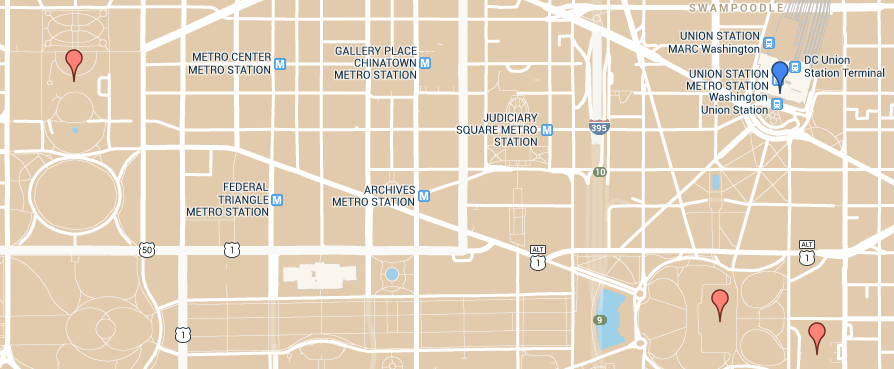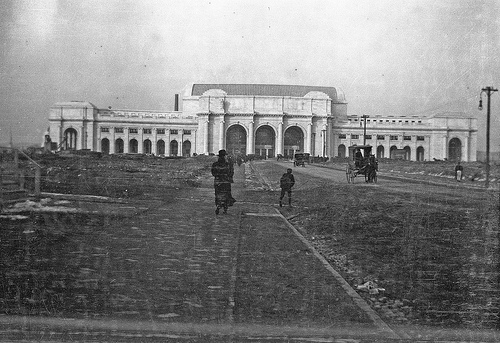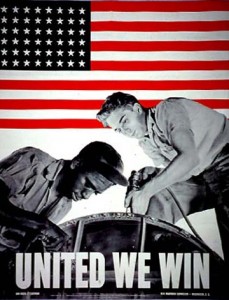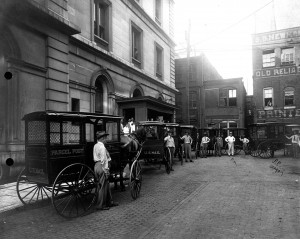Internet Security & The Rise of Union Station
April 28, 2014
Internet Security
My personal activities online could probably be more secure. I tend to not worry too much about social media sites and my privacy on those; however, I am more cautious with what goes up on those sites. I dislike long passwords, and tend to have not amazingly strong passwords, which could be dangerous. I do have multiple passwords depending on the site and it’s usage. Probably the most secure activities that I keep secure are those including money and banking information. Internet security isn’t something I worry about, rather then just have an acute awareness for what I am putting or giving access to the internet. I really liked what the guest lecturer said, “If you have something on a computer or phone connected to the internet, then a bad guy has already seen it.” This is a good mind set when thinking about how you use the ever so public Internet community.
Final Project Update
| I have found a bunch of individual items that I think are cool, but I am having difficulty seeing them work into a single narrative. For example, There is this item of people playing in the fountain outside of Union Station, and then this one, of soldiers gathering in the terminal of Union Station. I think they are both important, but I have yet to find the best connection for the two items. I also haven’t found many other mediums for items. I have a lot of pictures, but very few other item types. I would love to have some diversity in my items, but am having difficulty finding that. |
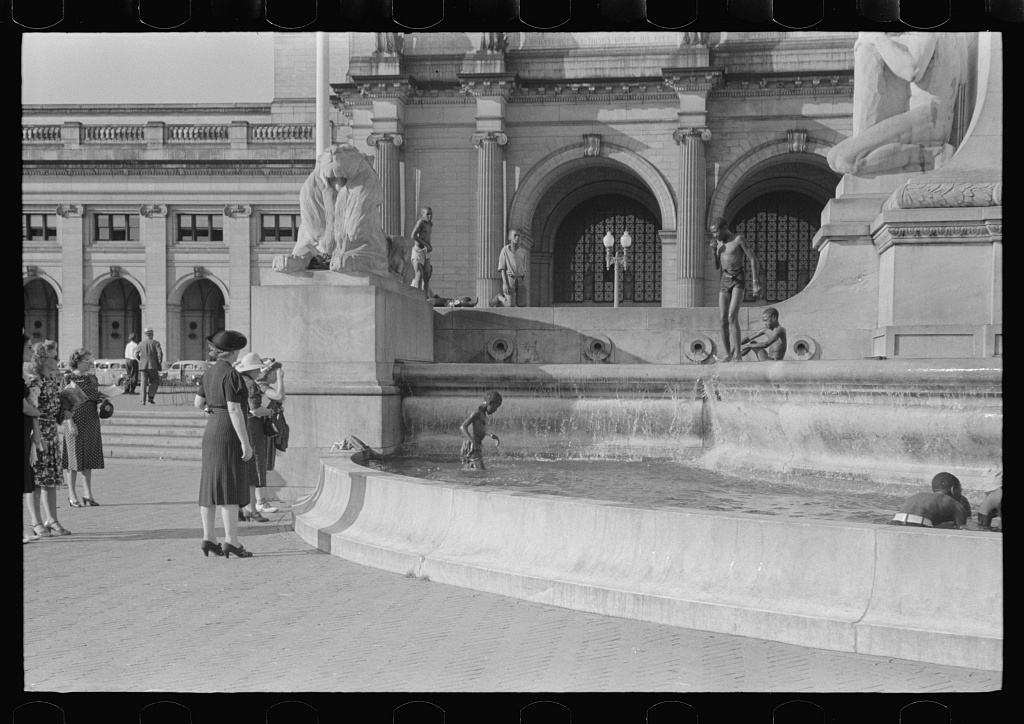 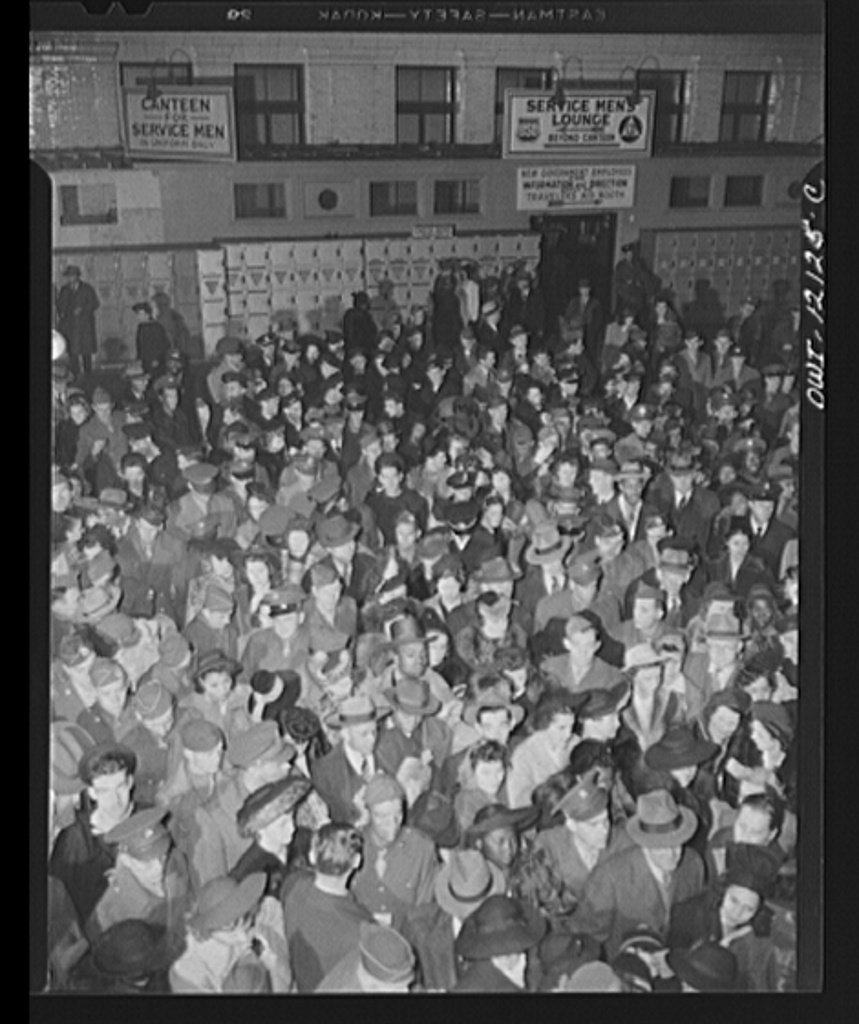 |
Exhibit
April 16, 2014
In my research I found that Union Station was actually built in the middle of a working class neighborhood, called Swampoodle, of Irish immigrants that worked on a lot of the monuments and wanted to be close to work. Union Station ended that neighborhood and ultimately the Irish immigrants kind of disappeared.
I found this really interesting, and almost changed my research question for it; however, I have decided that I will make this a specific exhibit in my project. It is a bit of a side story that branches off of the history of Union Station and I think plays into the social scene that has developed. ( I could be wrong, I don’t have evidence yet.) I found some interesting pictures on Ghosts of DC that got me researching this Irish settlers group. I do not have the items in my archives yet, but here is one of the images if you care to look.
Text Mining and Update
April 9, 2014
Text Mining
I found text mining interesting. The tools we used were nice to compare and look for trends through large documents or sets of information. However, I struggled to see how it could be used as strong evidence for anything. There was definitely a use for personal analysis, and as illustrations for larger points, yet it seemed difficult to find a greater solid use for both Wordle and Ngram.
Project UpdateIt is going well, I ran into an issue last week that tweaked my angle slightly. I considered changing my question all together, but I think I can work around doing that through an exhibit on the website. It was harder then I thought to find different stuff that could build a single narrative. It has been interesting seeing what works and what doesn’t. I am slightly behind on adding items cause, but should have a good basis here in a few days!
Mapping History
April 3, 2014
Maps
Creating my map was interesting. It took a bit of a learning curve to understand how points helped or could tell a story on a map. I had no issues creating my map, but it was oddly time consuming as far as creating a spreadsheet. At the moment I don’t have much more insight into my project because of this map, but I can see how it helped set up some things to look at and consider going forward.
Research Question
March 23, 2014
Calvin and Hobbes Copyright
February 28, 2014
The Calvin and Hobbes was published originally in 1993. It is still under copyright, and you must request the rights to use it from this site. However, because it being used for educational purposes in the classroom, it is acceptable. This includes in class presentations and student handouts, like syllabuses. According to the rights, it does not include handouts for non-students.
Seeing as this class has all of its material solely online and visible to anyone that cares to look it up, it makes the topic a little more complicated from the point of view that it is public. Safety would say that you buy the license for it, but $110 dollars is a lot for a header on a syllabus. I think if it were questioned you could have enough evidence to say that you were using under the proper classroom guidelines, but you may be asked to take it down.
Copyright is a very complicated process and its a lot less black and white then people think it is. There are so many different definitions and interpretations as to what is infringement that in this case, I think it could go both ways.
Areas of Interest pt2
February 26, 2014
Development in D.C.
I think I would really like to focus on the development of the city of DC. L’Enfant has always been an interest of mine, and I always run into questions as to why it was and is designed the way it is.
To start my research, I would start with a shallow web search through Google just to see what pops up. Then I would move into databases like EBSCO through Mason, as well as the Library of Congress. I think this will provide a solid base for what I am looking for. I will probably need to narrow it again after an initial search due to development of a city being a broad topic.
Based on what I found the first time through I would narrow and go through the cycle again.
Areas of Interest – Washington DC
February 17, 2014
 Washington DC has such a rich history that dates back to the near beginnings of the country, and has meant different things to different people over the years and decades. Rich in history and culture, there is no shortage of possibilities when looking for topics.
Washington DC has such a rich history that dates back to the near beginnings of the country, and has meant different things to different people over the years and decades. Rich in history and culture, there is no shortage of possibilities when looking for topics.
I am looking at 3 different areas for potential topics.
1- The history and development of Union Station I love union station and every time I walk through the massive doors and into the vast openness of it, I can feel the history that surrounds it. Unfortunately I don’t know what that encompasses. I am not sure what angle would be taken on this topic, but imagine that the opening would be a good place to start. Union Station is such a social venue that taking a cultural historical approach to it would be interesting. I would start with newspaper and journal databases in hopes of finding a solid starting block. If there was nothing specific about Union Station, I would broaden it to look at architecture in DC and see if that came up with anything. Most sources would be primary sources.
This is an important topic because Union Station has been and is a sign of the culture. It has ever changing stores and restaurants. Its a place where there are tourists and locals hanging out and, yet it still maintains its past. Its a building that in my opinion represents the people of DC.
2- Anti-Segregation in Washington DC
This is a very broad topic and I would probably focus on adjustment out of segregation and after the walk of Martin Luther King and his speech. DC being such a diverse place, would be interesting to see how that played out with the people in the city. What did the government side of the city say about it? With DC being majority colored, what was the effect of anti-segregation in DC compared to other parts of the country. I would need to look at segregation before King’s speech just to understand what it was like in DC. Then look at the progression of change after King’s speech till now. I would use databases and newspapers to find this information. Would look very specifically for local sources because I imagine it was very different in DC then anywhere else.
This is an important topic because segregated America was a big time in our country’s history, and if we are going to claim that we are no longer segregated and a free country then how we got there is important. DC offers a very unique point of view on the topic as a whole and as the capitol of our country it’s important that it sets the example.
3- Development of the City
You don’t need to be in DC long before you are frustrated with the roads and the general confusion in the layout of the city. It’s also pretty common knowledge that the Potomac used to come up pretty much in front of the White House. Why was DC chosen to be the capital city? Through maps and primary source papers found through databases, I would hope to find at least where to start with this topic. I would imagine the Library of Congress would have some interesting resources available on the subject.
This is important because when we decided to make DC our nation’s capitol way back when, we had expectations for how it would turn out and how it would be illustrated to the rest of the world. Today’s DC is a lot different then the DC that it was when first established.
Primary Sources
February 9, 2014
 |
Digitized primary sources from the District of Colombia in the early 1900s.
View looking northwest from Anacostia: Washington DC Evening Star Another thing I spent time looking at was the ‘The Reign of Chrysanthemum’ article. There was a lot of details that I could use to corroborate with. I found links back to the Department of Agriculture and different achievements of Dr. BT Galloway. What was interesting was that most of all my second and third layers of research were other primary sources, mostly it was other newspapers. It was difficult to find factual information on the event in 1905. I tried the National Chrysanthemum Society, which was founded in 1944. They didn’t seem to have digitized records from anything earlier then the 1999.From these two sources the map was definitely harder to analyze. I think this was because there really was no context for the creator that could be found simply. He didn’t have many pieces accredited to his name, and I couldn’t find much about him. |
Website Reviews
February 3, 2014
For my two websites I choose ‘The Power of Persuasion’ and ‘100 Years of Parcels, Packages, and Packets, Oh My!’
The Power of Persuasion – (http://www.archives.gov/exhibits/powers_of_persuasion/powers_of_persuasion_intro.html)
100 Years of Parcels, Packages, and Packets, Oh My! – (http://npm.si.edu/parcelpost100/index.html)
